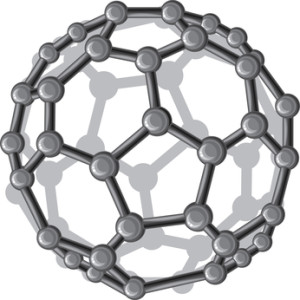Does this title have you scratching your head? Are you thinking that innovation and structure are opposites? Read on. . .
Ask most people what they think about when they consider creativity and innovation, and most likely “structure” and “process” won’t be on the list. Would they be on yours?
 Most of us think about creativity as a free spirited, open minded, capture-the-ideas-in-the-wind thing. We don’t associate it with words like discipline, structure, approach, and process. If you value new ideas and innovation and you don’t include those words in your mental inventory, you are missing a (huge) opportunity.
Most of us think about creativity as a free spirited, open minded, capture-the-ideas-in-the-wind thing. We don’t associate it with words like discipline, structure, approach, and process. If you value new ideas and innovation and you don’t include those words in your mental inventory, you are missing a (huge) opportunity.
Let me expose the myth with three examples and some suggestions for applying these ideas for yourself and your team.
At the Improv
When people think of highly creative people, improv actors often come to mind. These highly talented people seem to be able to create an entertaining story, line, or show “out of thin air.” In fact, they can be so good that some of my more cynical friends had to be convinced by the actors themselves that it wasn’t all a hoax or a ruse.
While improv actors are definitely talented, they are also well trained. Improv, as free-flowing and spontaneous as it seems (and is), has, underneath it, very specific rules that actors live by during performances. And the structure isn’t just during the performance either – actors gather before performing to “warm-up” using one or more specific exercises to loosen up and get their creativity flowing.
Tips:
- Consider building a code or philosophy to help you improve the culture or climate of innovation on your team or in your organization.
- If you want more creativity, perhaps warming up before brainstorming might help. After all, it helps improv actors – think what it could do for you!
Writers and Artists
Another group of people typically thought of as creative are writers and artists. Since I fall into one of those groups, I feel qualified to discuss it a bit. Over time, I have developed habits and routines about how and when I write, and how I come up with ideas. I write most often during a specific time of day, when I am at my best for this task. I constantly scan my environment for ideas that could become articles, blog posts, chapters, etc. That scanning includes what I read and what I see (I often take pictures of things that end up an important part of my writing). I try to make unique connections (offering leadership lessons from beer or a camel, for example). Forcing associations and using metaphors is a classic idea generation technique that I’ve applied to a different task. I have processes to capture and curate those ideas so that when I need an idea to write about, I have a ready source of material. I sometimes think about writing tasks (like this one) for several days so that when the time to write comes, I will be more effective and efficient.
And by the way, this isn’t just me – I’ve talked to many other writers and artists who could tell you similar stories. Some do all their writing in the same place, some have other routines, all have both structure and process embedded in their work in ways that might not be immediately obvious. That is why creativity and innovation seem like magic, but hopefully by now you realize it is not.
Tips:
- Use routine to your advantage to spur idea creation. Perhaps you might brainstorm at a certain time each week or month with your team.
- Have structure for collecting ideas for future use. Consider what would happen if everyone on your team was always on a hunt and captured ideas about your most important goals.
Inside Organizations
Highly innovative organizations might have ping pong and Foosball tables, but they also have structure, expectations, and processes. If my other examples weren’t clear or relevant enough for you, we’ll talk in organizational language for a second.
Think about it this way – organizations have goals like adding new products, raising profits, improving productivity, reducing cost, (as examples) – and innovation is required to achieve these things. If you have clear vision about where you want to go and why, and you engage everyone in that vision, you will have a better chance at innovation, right?
The best organizations allow time for people to create ideas; and don’t expect great insights to arrive instantly, at a moment’s notice in a conference room. And – if we have everyone engaged in the vision, we will be operating on ideas and innovation at that higher level and in a proactive way, rather than constantly being reactive and in a rush to solve a problem. This time shift gives us more time, and without the pressure of a crisis or emergency, undue judgment is less likely to show its head. You know judgment – that nasty barrier to good ideas and implementation?
Remarkable Principle: Remarkable leaders know that creativity and innovation are more than fun and games –that structure can help both occur more regularly and predictably.


It’s refreshing to read your thoughts about innovation as a process. Many organizations go a step further and actively direct/focus the innovation process so that the innovation/creativity more closely aligns with the organization’s strategy and goals. It is also interesting to read about how these same processes are at work with writers and during improvisation.